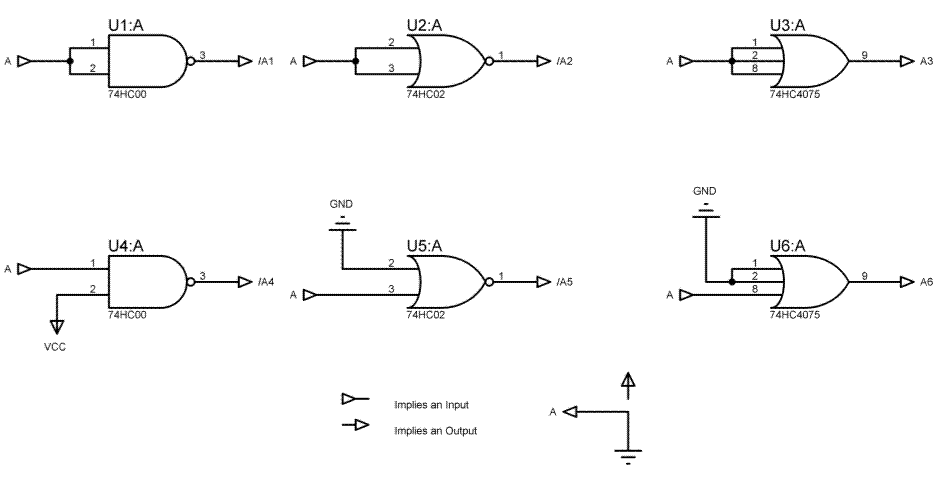vsmGuy
Advanced Member level 2

Hi !
I have made two sets of logically equivalent designs, one on each row, i.e, the gate hook up in the bottom is logically equivalent to the gate hookup just above it..
For example, the one on first row, first column is logically same as that in second row, first column, or , the one on first row, third column is logically same as that in second row, third column.

Given an option, which design you would choose over the other (i.e the top one or the bottom one) and why ?
The why is the most important.
If anyone is going to highlight terms like nonuniform propagation delay, he better show something in print, like quote a datasheet or DSO outputs.
If you find this topic insightful, please vote too !
I have made two sets of logically equivalent designs, one on each row, i.e, the gate hook up in the bottom is logically equivalent to the gate hookup just above it..
For example, the one on first row, first column is logically same as that in second row, first column, or , the one on first row, third column is logically same as that in second row, third column.

Given an option, which design you would choose over the other (i.e the top one or the bottom one) and why ?
The why is the most important.
If anyone is going to highlight terms like nonuniform propagation delay, he better show something in print, like quote a datasheet or DSO outputs.
If you find this topic insightful, please vote too !



